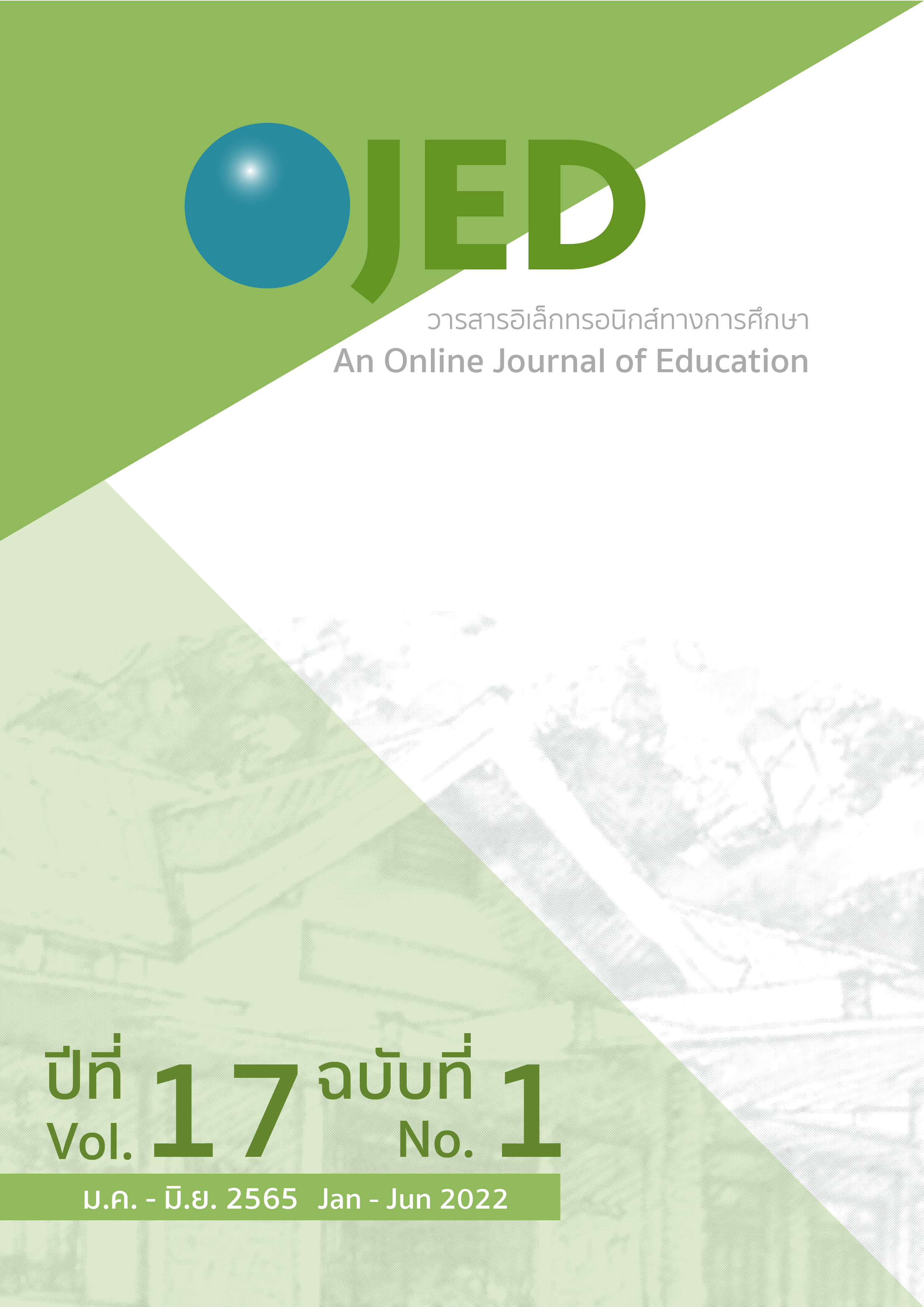The Study of Mobile Learning to Support English Reading Instruction and Enhance English Reading Motivation of Grade 4 Students
DOI:
https://doi.org/10.14456/ojed.2022.32Keywords:
mobile learning, reading instruction, motivationAbstract
This study examines mobile learning, which allows for learning to occur anytime and anywhere, as a tool to investigate students’ reading motivation and reading comprehension. The study incorporates criteria from the three generations of mobile applications (Yau & Joy, 2009) and the five areas of reading instruction (Armbruster et al., 2001). The objectives of the study were 1) to examine the appropriateness of a selected mobile application for mobile learning and reading instruction, and 2) to investigate whether mobile learning enhances students’ reading motivation. The participants of this study were five Grade 4 students of Chulalongkorn University Demonstration Elementary School who were enrolled in the regular English class in the second semester of academic year 2013. The data collection was conducted over three 50 minute class periods and with outside class learning through mobile devices. The instruments used were the motivation evaluation form and the focus group. The study found that the qualitative feedback from the focus group was largely positive. In addition, the assessment of the students’ motivation level with mobile learning for reading instruction showed that 40% of the students had a medium motivation level and 60% had a high motivation level.
References
Alexander, P. A. (1998). The nature of disciplinary and domain learning: The knowledge, interest, and strategic dimensions of learning from subject-matter text. In C. Hynd (Ed.) Learning from text across conceptual domains (pp. 263-287). Lawrence Erlbaum
Armbruster, B. B., Lehr, F., & Osborn, J. (2001). Put reading first: The research building blocks for teaching children to read. National Institute for Literacy.
Becking, D., Betermieux, S., Bomsdorf, B., Birgit, F., Heuel, E., Langer, P., & Schlageter, G. (2004). Didactic profiling: Supporting the mobile learner. In J. Nall & R. Robson (Eds.), Proceedings of E-Learn: World Conference on E-Learning in Corporate, Government, Healthcare, and Higher Education 2004 (pp. 1760-1767). Association for the Advancement of Computing in Education (AACE).
Day, R. R., & Bamford, J. (1998). Extensive Reading in the Second Language Classroom. Cambridge University Press.
Gehard, J. G. (1996). Teaching English as a foreign or second language. University of Michigan Press.
Goodman, K. (1996). On Reading. Heinemann.
Hirvela, A. (2004). Connecting reading & writing. The University of Michigan Press.
O'Malley, C., Vavoula, G., Glew, J.P., Taylor, J., Sharples, M., & Lefrere, P. (2005). Guidelines for learning/ teaching/ tutoring in a mobile environment. https://hal.archives-ouvertes.fr/hal-00696244/document
Prensky, M. (2001). Digital natives, Digital immigrants. http://www.marcprensky.com/writing/Prensky%20-%20Digital%20Natives,%20Digital%20Immigrants%20-%20Part1.pdf
Quinn, C. (2000). mLearning: Mobile, Wireless, In Your-Pocket Learning. Line Zine. Fall. http://www.linezine.com/2.1/features/cqmmwiyp.htm
Ryan, R. M., & Deci, E. L. (2000). Intrinsic and extrinsic motivations: Classic definitions and new directions. Contemporary Educational Psychology, 25(1), 54–67.
Sangthong, K. (2013). Effects of word walk vocabulary instruction on new words gained by Thai EFL young learners [Master’s thesis]. Chulalongkorn University.
Traxler, J. (2005). Defining Mobile Learning. http://www.academia.edu/2810810/Defining_mobile_learning.
Wigfield, A., Guthrie, J. T., Tonks, S., & Perencevich, K. C. (2004). Children's motivation for reading: Domain specificity and instructional influences. Journal of Educational Research, 97, 299-309.
Yau, J., & Joy, M. (2009). A mobile and context-aware learning schedule framework from a pedagogical perspective – an interview study. http://eprints.dcs.warwick.ac.uk/109/1/yau_joy_iadis_mlearn_09.pdf
Downloads
Published
How to Cite
Issue
Section
License
Copyright (c) 2022 An Online Journal of Education

This work is licensed under a Creative Commons Attribution-NonCommercial-NoDerivatives 4.0 International License.




